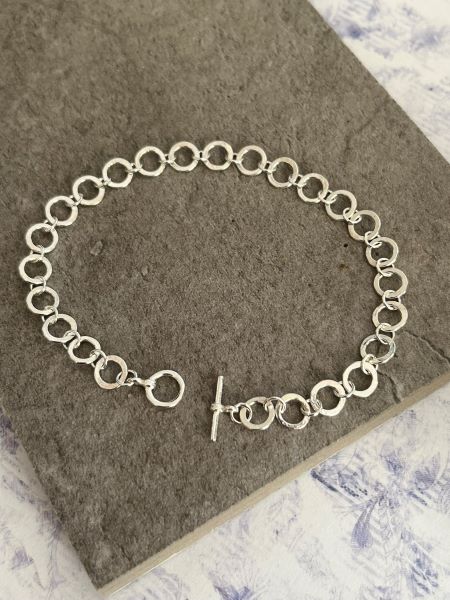Learn how to make your own silver bracelet with our step by step project. Whether you’re a beginner or an experienced jeweller, this project allows you to experiment with chain patterns, sizes and clasps using high-quality materials that make for a lasting keepsake. A sterling silver chain bracelet is a perfect jewellery making project combining elegance, creativity and a personal touch. Ready to start making your own chain bracelet? Our step by step guide explains everything you need to know…
To purchase all the materials needed for this project, click here.
Watch our step by step video on this project below:
What is a Jump Ring
A jump ring is a small metal loop with a narrow cut and is primarily used to connect parts of jewellery together. Traditionally jump rings are used to attach chains, hang pendants, link charms and more. Jump rings can also be used to create chain mail and can be linked to form the main design components of a piece. In this specific project we are going to show you how to use jump rings to create a chain bracelet, a simple and unique design.
What You Need
- 1 pack of 25 6mm sterling silver heavy open jump rings
- 1 pack of 25 4mm sterling silver light open jump rings
- 1x sterling silver ring and bar with a ring diameter of 7mm and a bar length of 10mm
- 1x Beginners soldering kit
- 1x 5g easy solder paste
- 1x 130mm chain nose pliers
- 1x 135mm flat nose pliers
- 1x ImpressArt steel block
- 1x 4oz ball pein hammer
- 1x Silver polishing cloth
- Butane gas
Step 1
Begin by closing 25, 6mm sterling silver jump rings. To close a jump ring use two pairs of pliers (flat, chain or snipe nose). Grip either side of the jump ring end with the pliers and twist inwards to close until the ends are aligned and flush with no gaps.
Note: For a 7 inch bracelet use 23x 6mm & 25x 4mm jump rings. For a 7.5 inch bracelet use 25x 6mm jump rings & 27x 4mm jump rings.
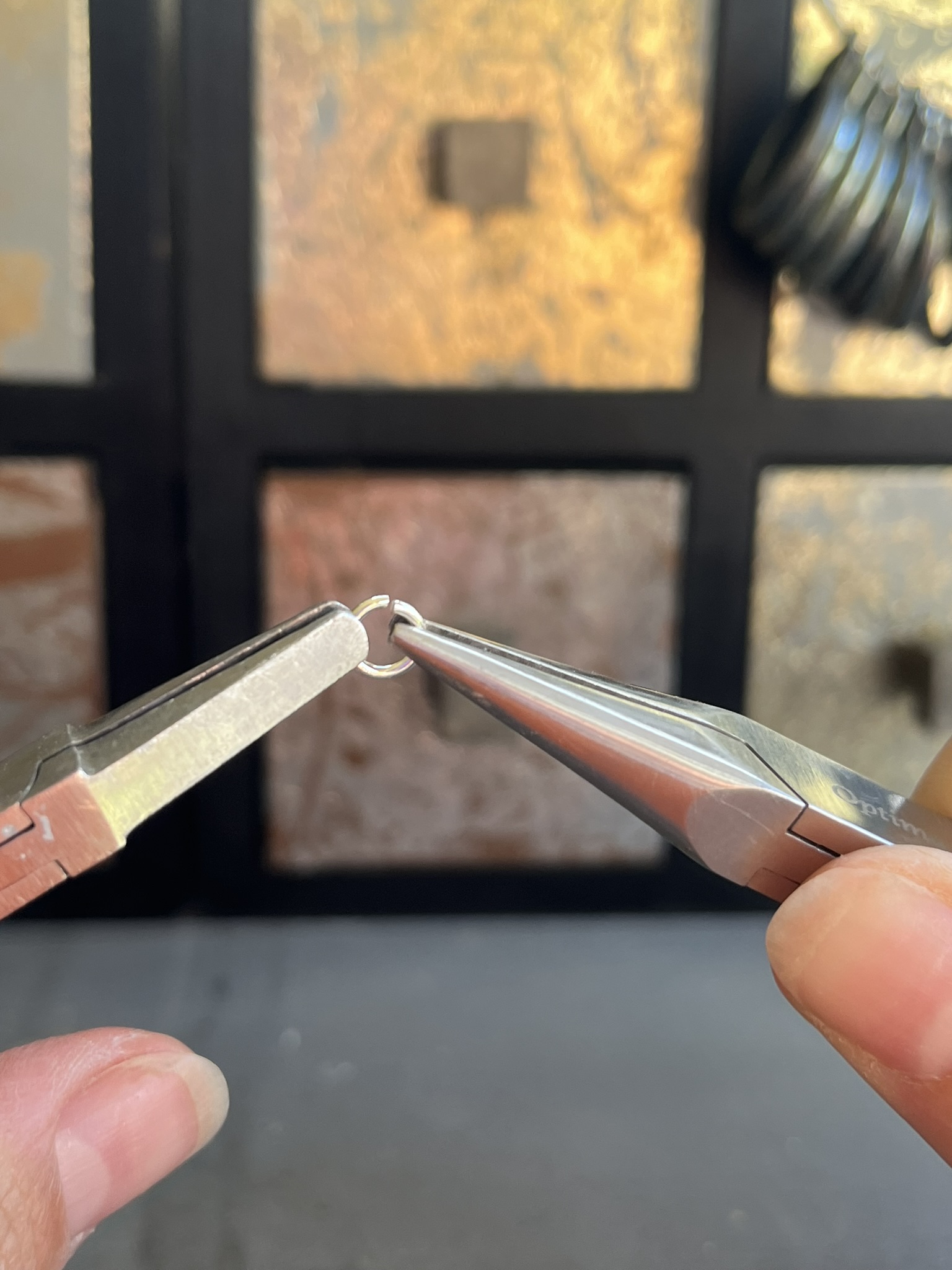
Step 2
Add a little solder paste to each jump ring join and place on a soldering block. Heat the jump rings individually using a blowtorch until the solder paste melts and flows.
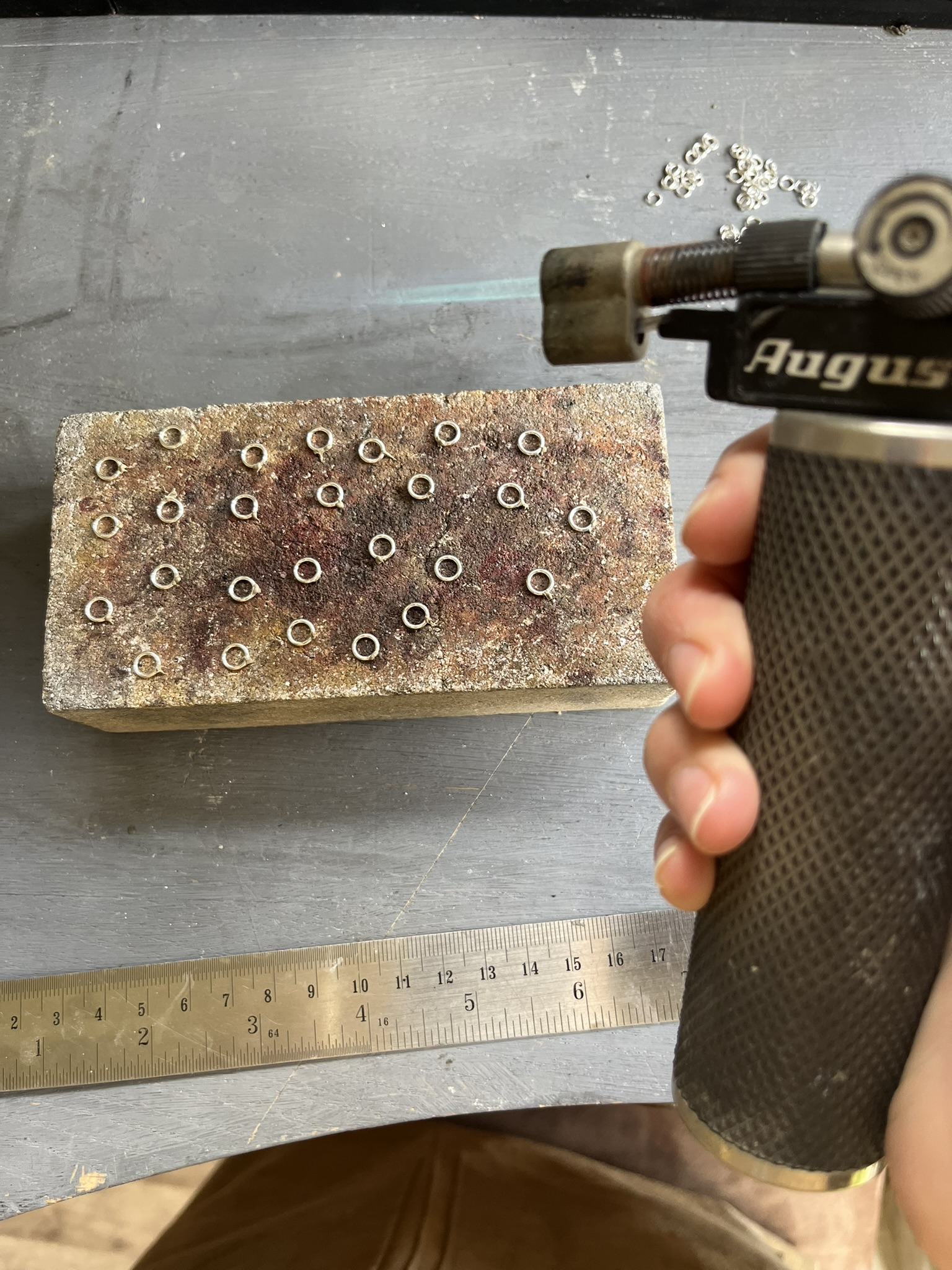
Step 3
Leave the jump rings to cool or quench each one in water using tweezers.
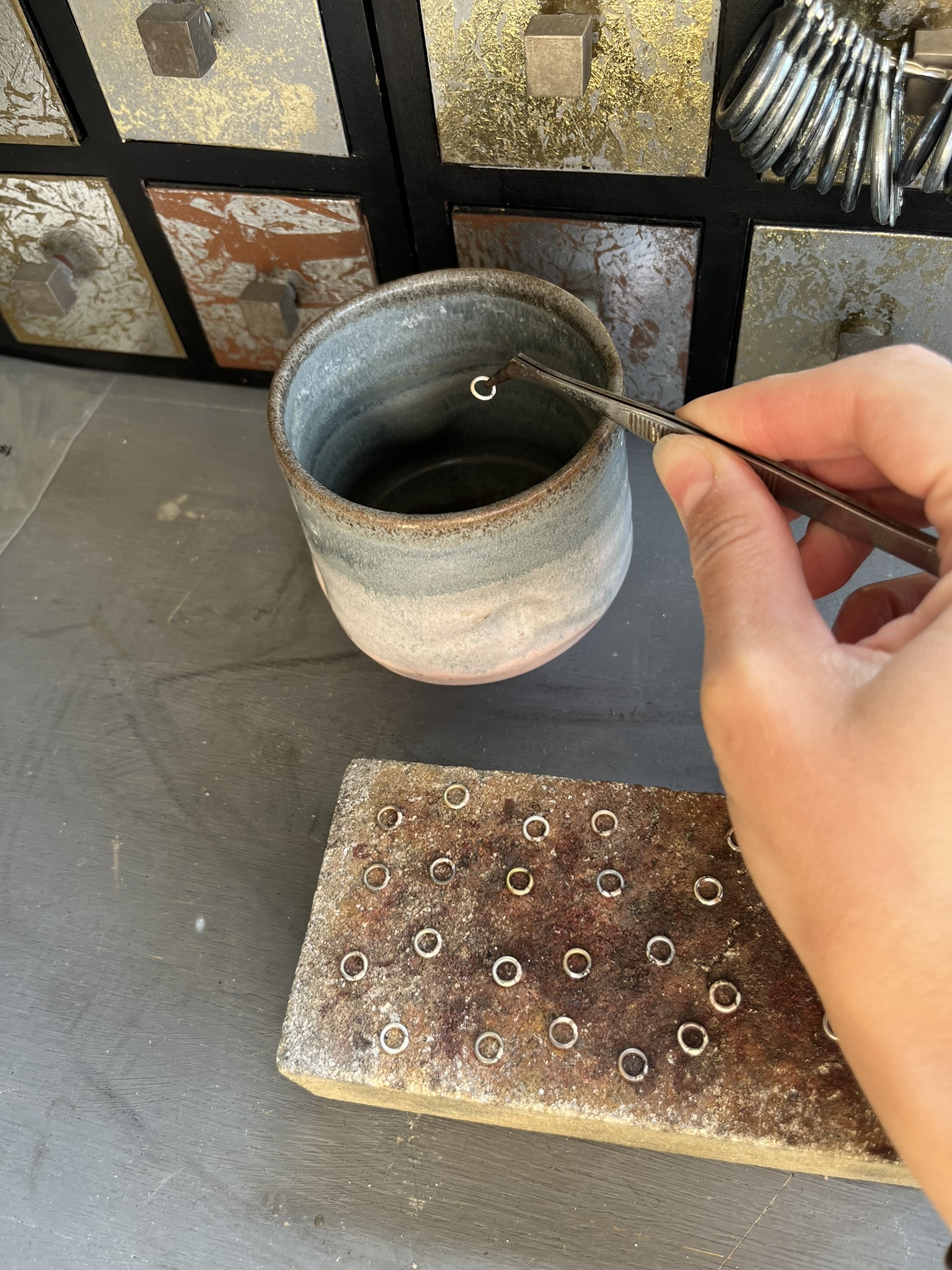
Step 4
Add all the jump rings to a warm safety pickle solution for 10 minutes or until clean. Inspect all the jump rings to ensure they are well soldered. If not repeat the soldering process.
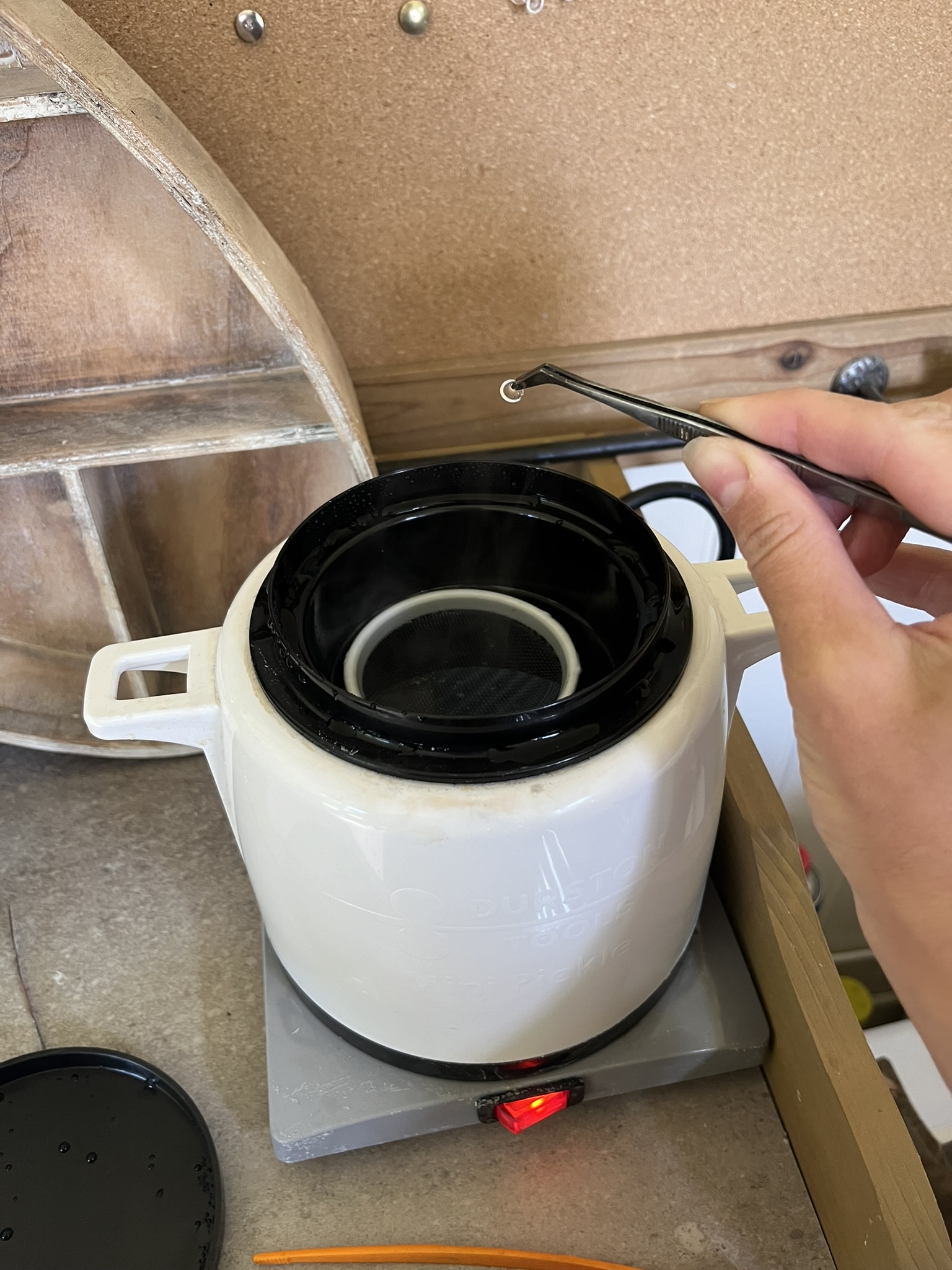
Step 5
When dry place a soldered jump ring on a steel block and flatten using a hammer. You may want to secure the jump ring in place with a piece of double-sided tape before hammering.
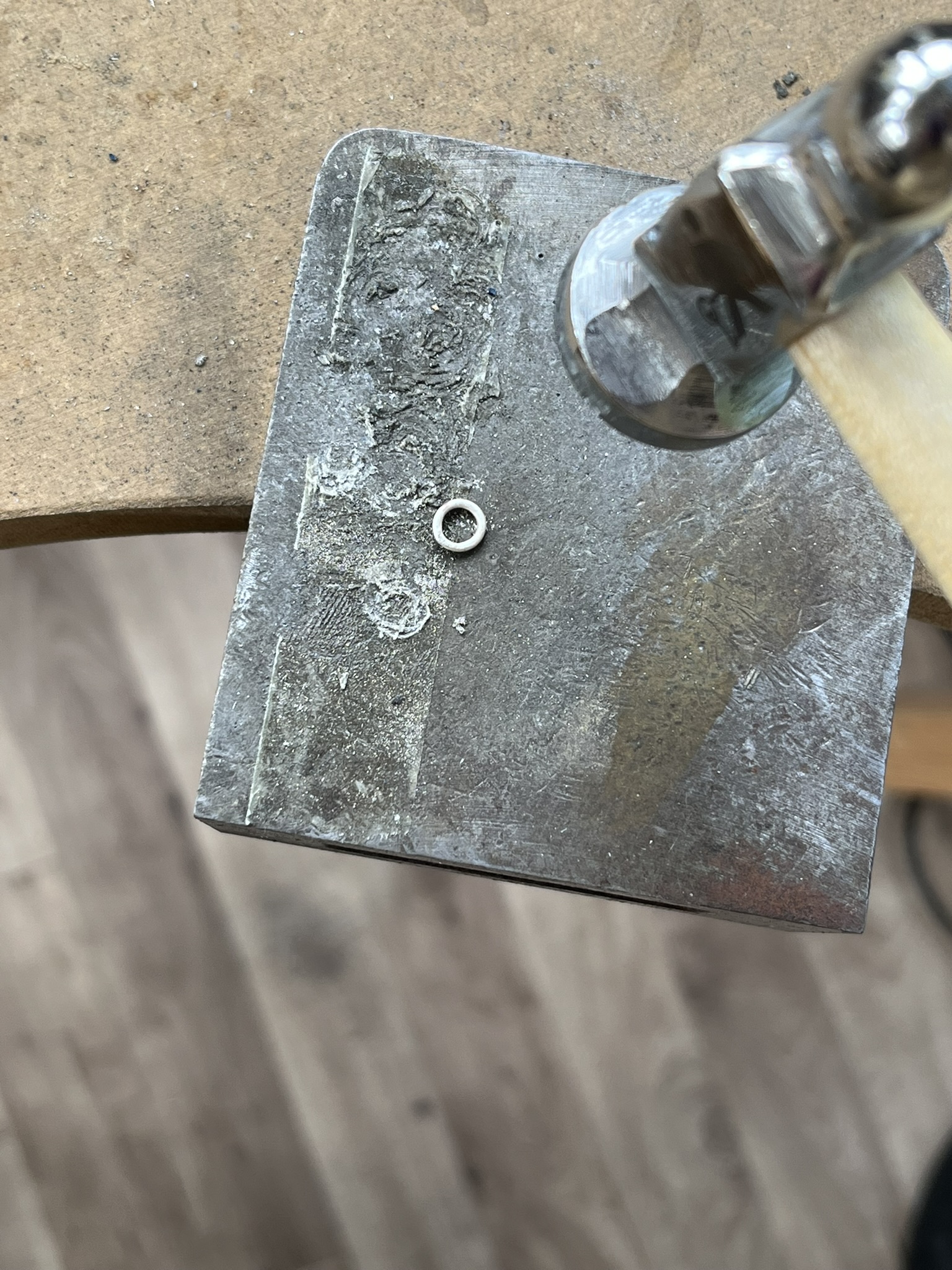
Step 6
Begin to build the bracelet chain by joining two 6mm jump rings together using a 4mm jump ring.
To open a 4mm jump ring, use two pairs of pliers (flat, chain, or snipe nose). Grip either side of the jump ring’s ends with the pliers and twist outwards to open. Thread on two 6mm jump rings and close the 4mm jump ring.
To close the 4mm jump ring, use two pairs of pliers (flat, chain, or snipe nose). Grip either side of the jump ring’s ends with the pliers and twist inwards to close until the ends are aligned and flush with no gaps.
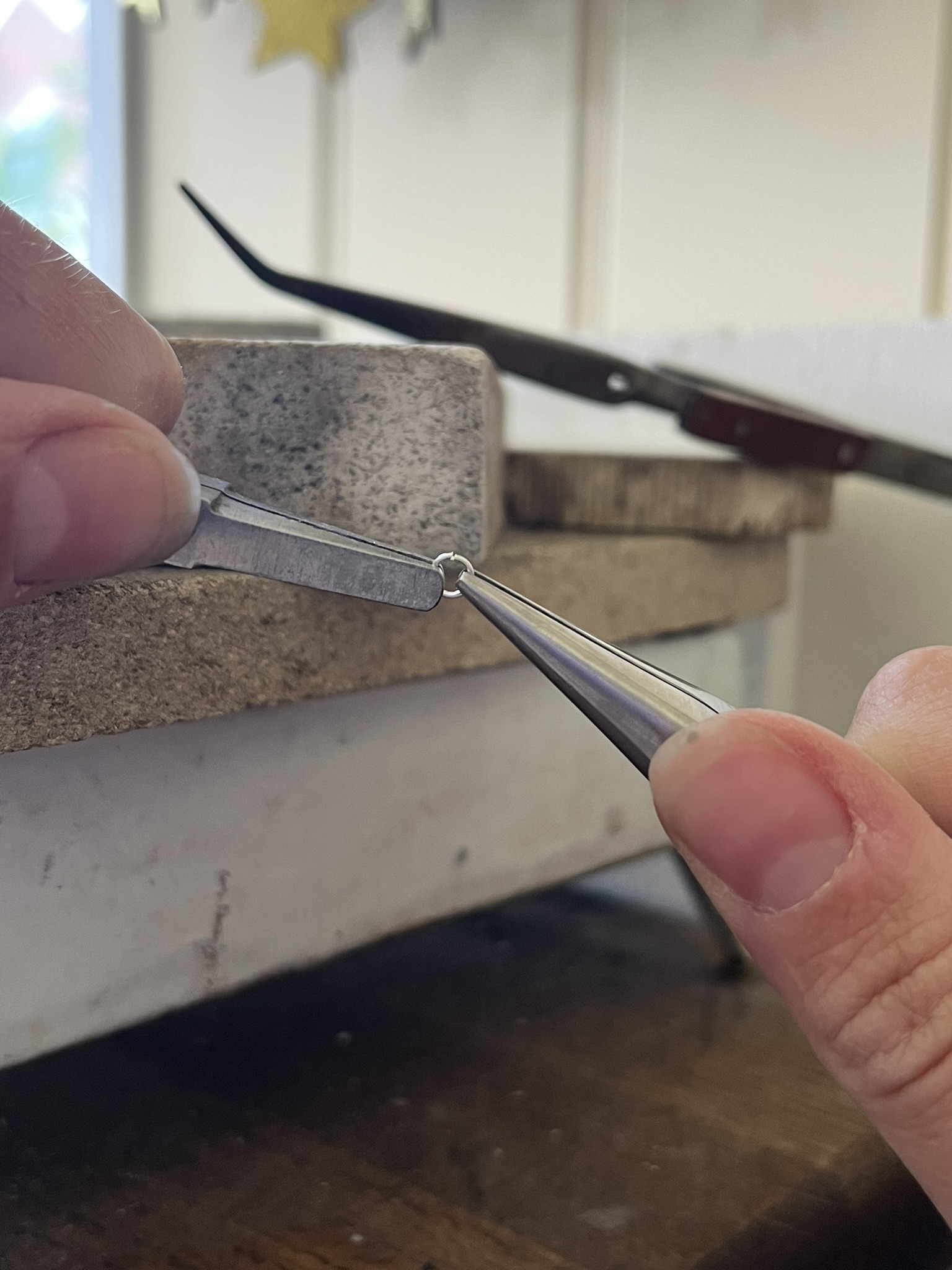
Step 7
Hold the 4mm jump ring in a pair of reverse action tweezers in a 3rd hand or rested on a soldering block.
Add a small amount of solder paste to the join on the jump ring and heat it using a blowtorch until the solder melts and flows.
Quench the silver chain in water and dry.
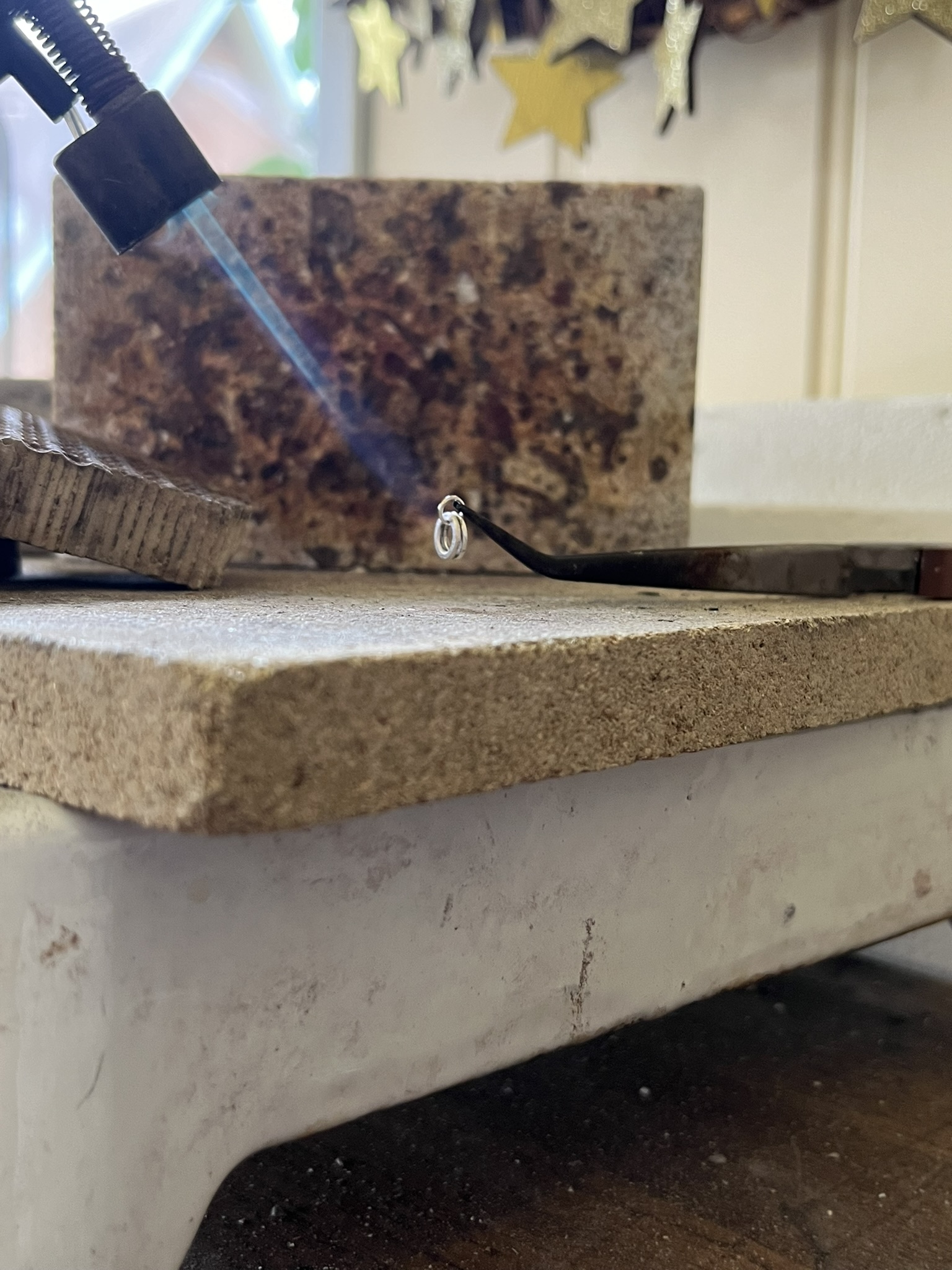
Step 8
Repeat the process of adding the 6mm jump rings together using the 4mm jump rings and soldering to create a chain.
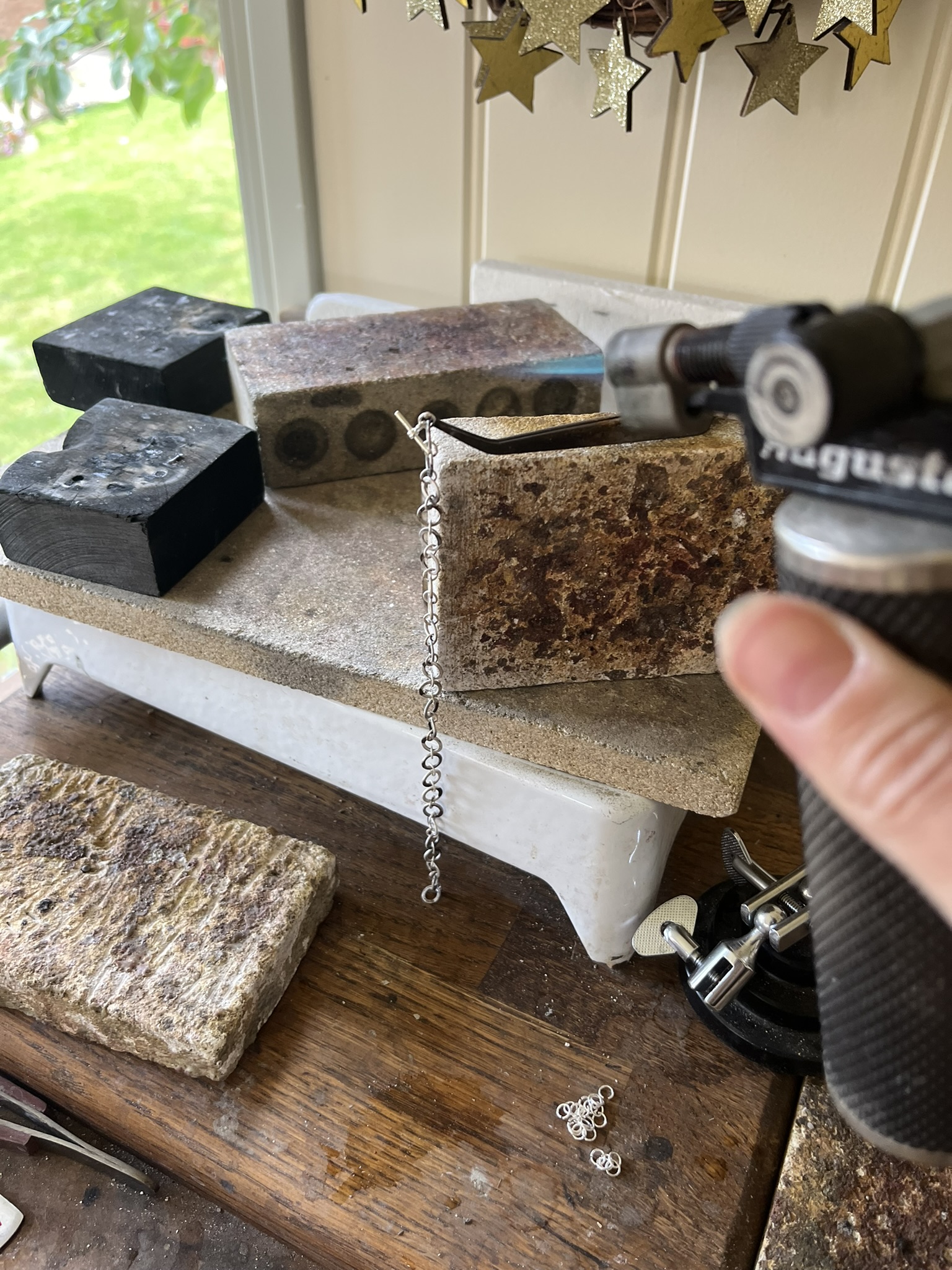
Step 9
Attach the toggle clasp at either end of the chain using 4mm jump rings. When adding the toggle clasp, ensure that the bar/toggle has two 4mm jump rings attaching it to the chain so it will thread through the hoop end of the clasp.
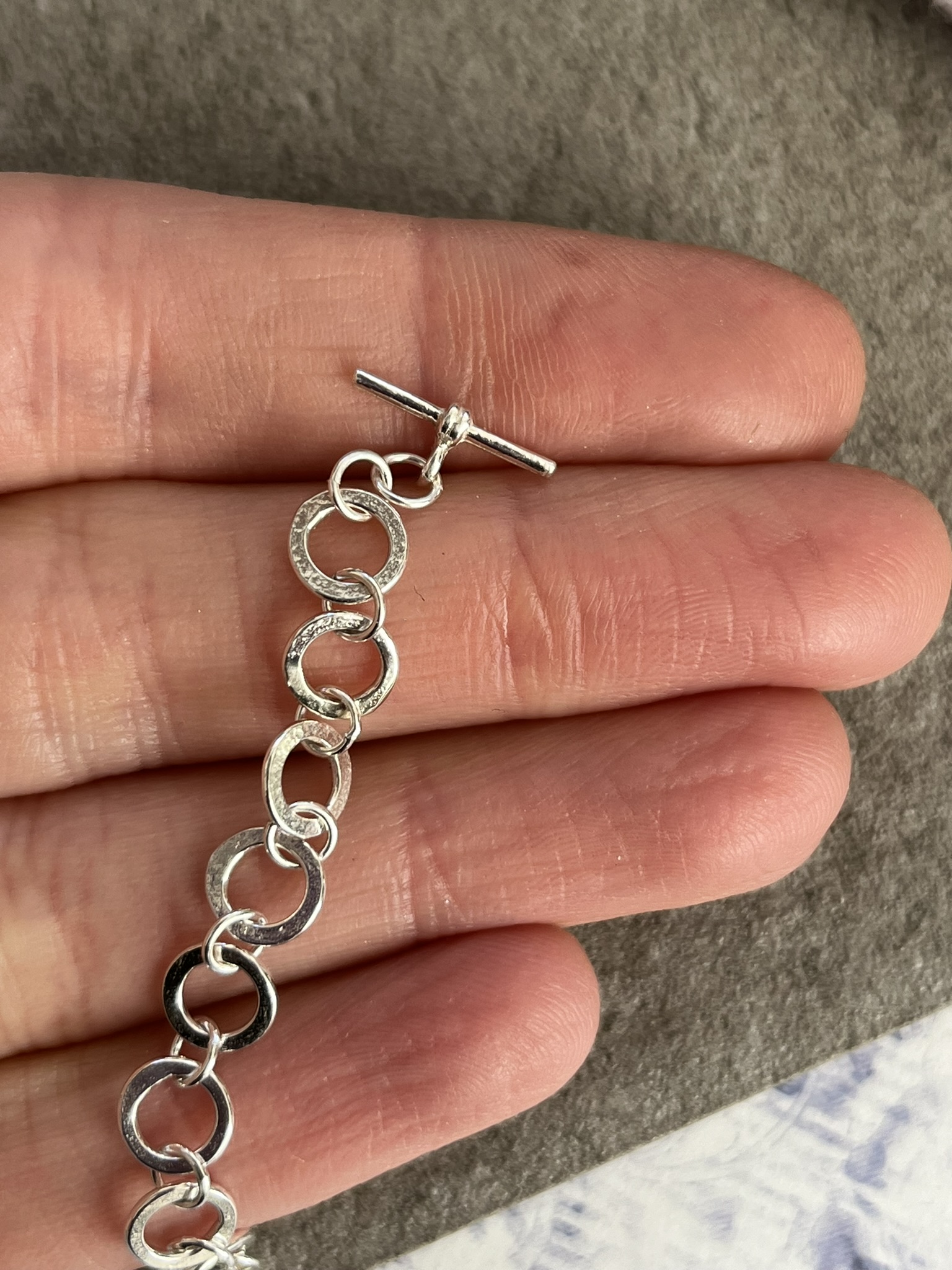
Step 10
Add the bracelet chain to a warm pickle solution for 10 minutes or until clean.
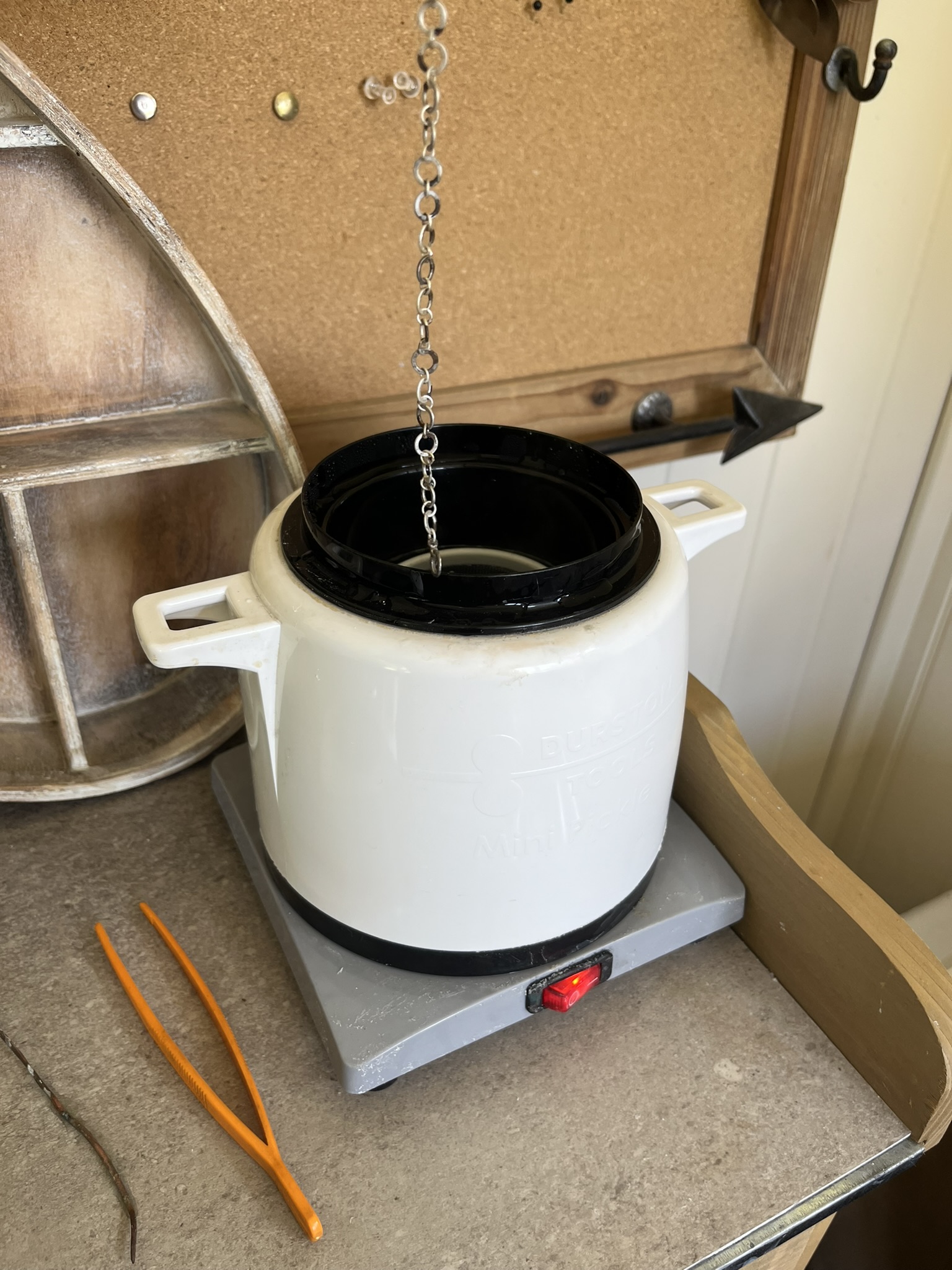
Step 11
To polish use a barrel tumble polisher with water, barrelbrite and shot or use a silver polishing cloth to add shine.
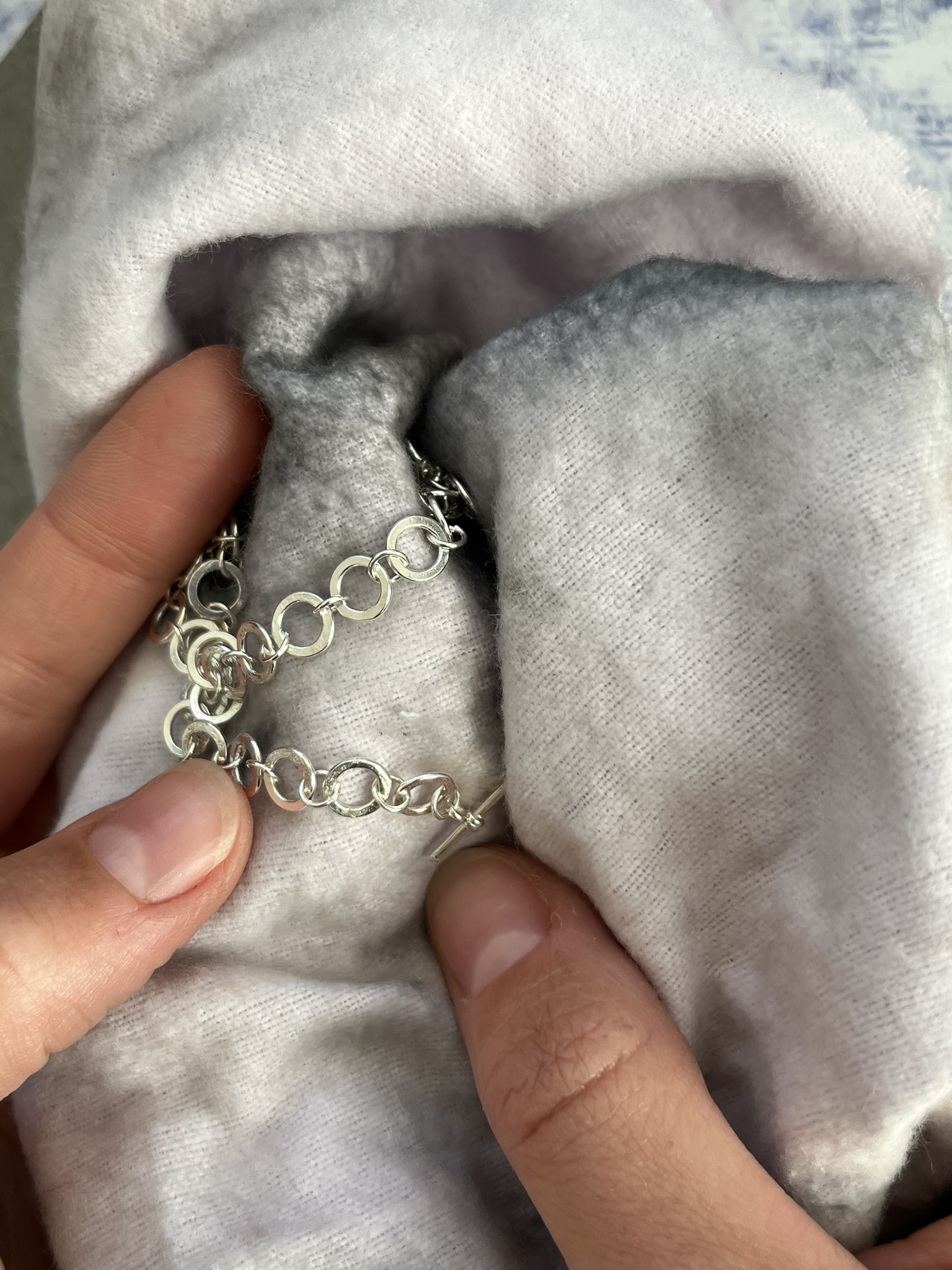
Isn’t it incredible how such a simple component can be used to form such a unique design? Jump rings are an essential component in any jewellery makers kit but can also be quite versatile and used to form the core design of a jewellery piece. This is such a great project, easy to follow and a great way to learn new techniques. Let us know if you have followed our step by step guide and created your own silver chain bracelet, we would love to know just how many of you have brought this design to life.

Sian Brown
Sian has been hand making her award winning jewellery in the West Midlands for over 12 years. Sian spent 10 years in Birmingham’s historic Jewellery Quarter before relocating to a quiet Worcestershire village.

